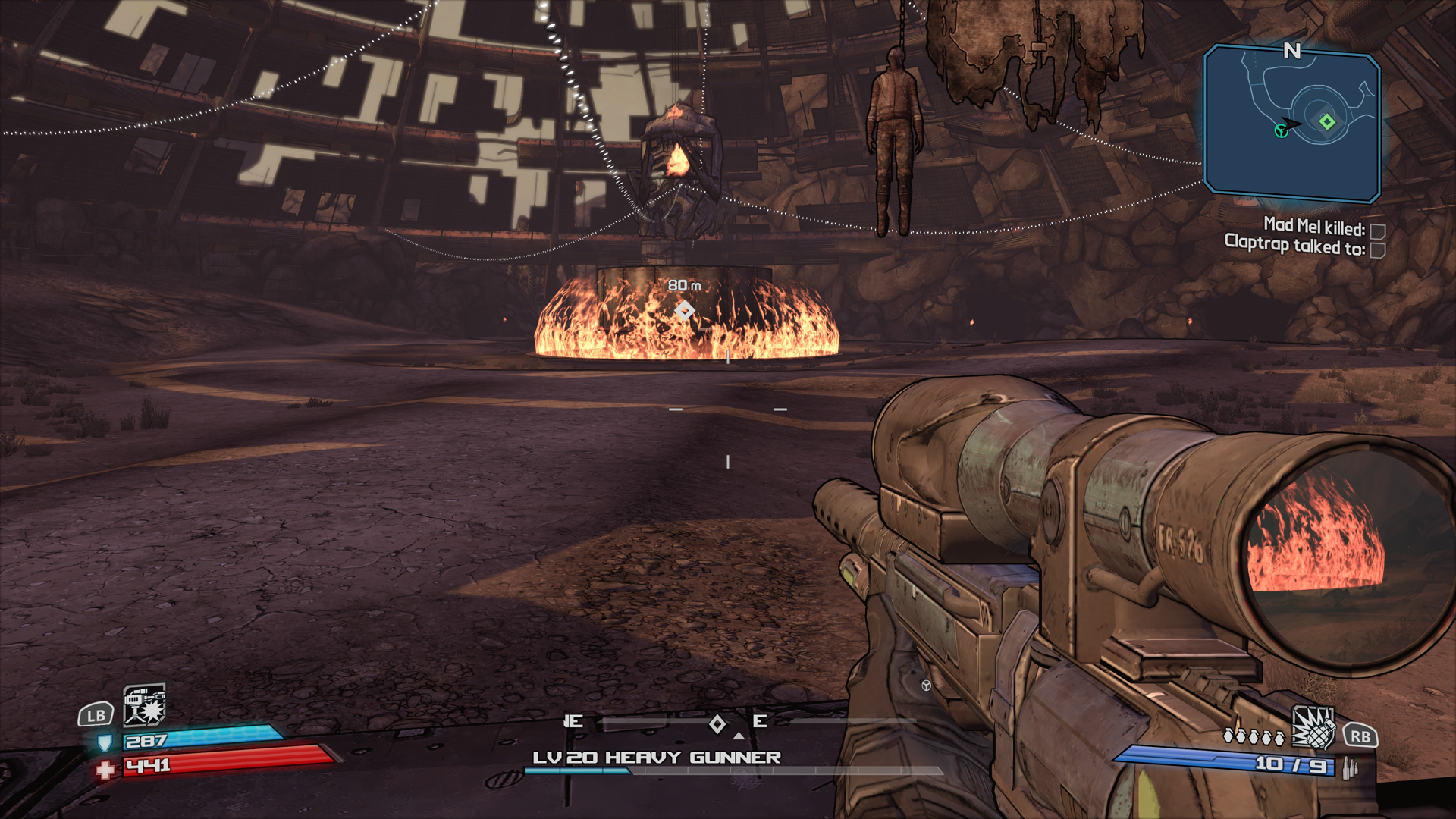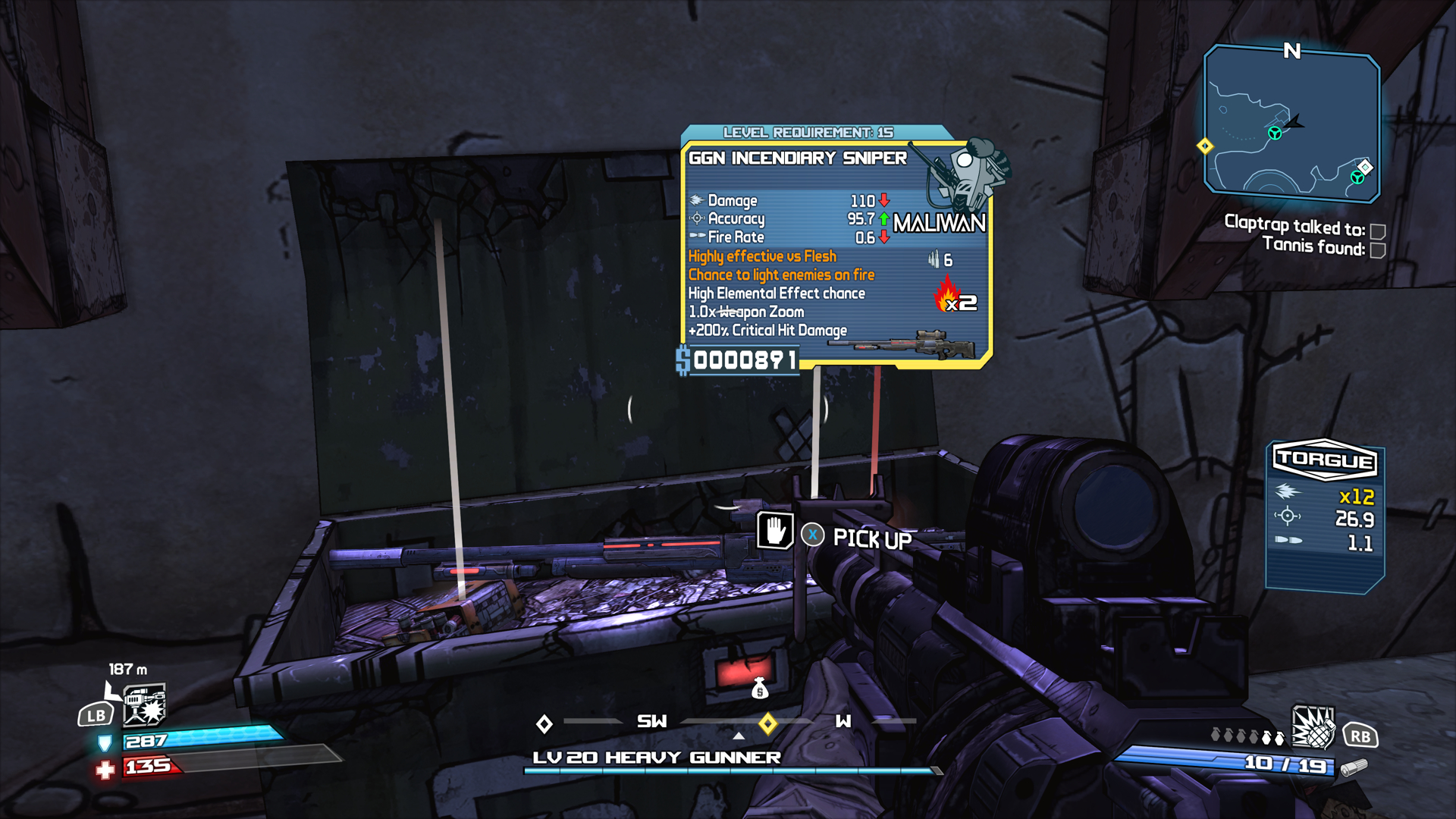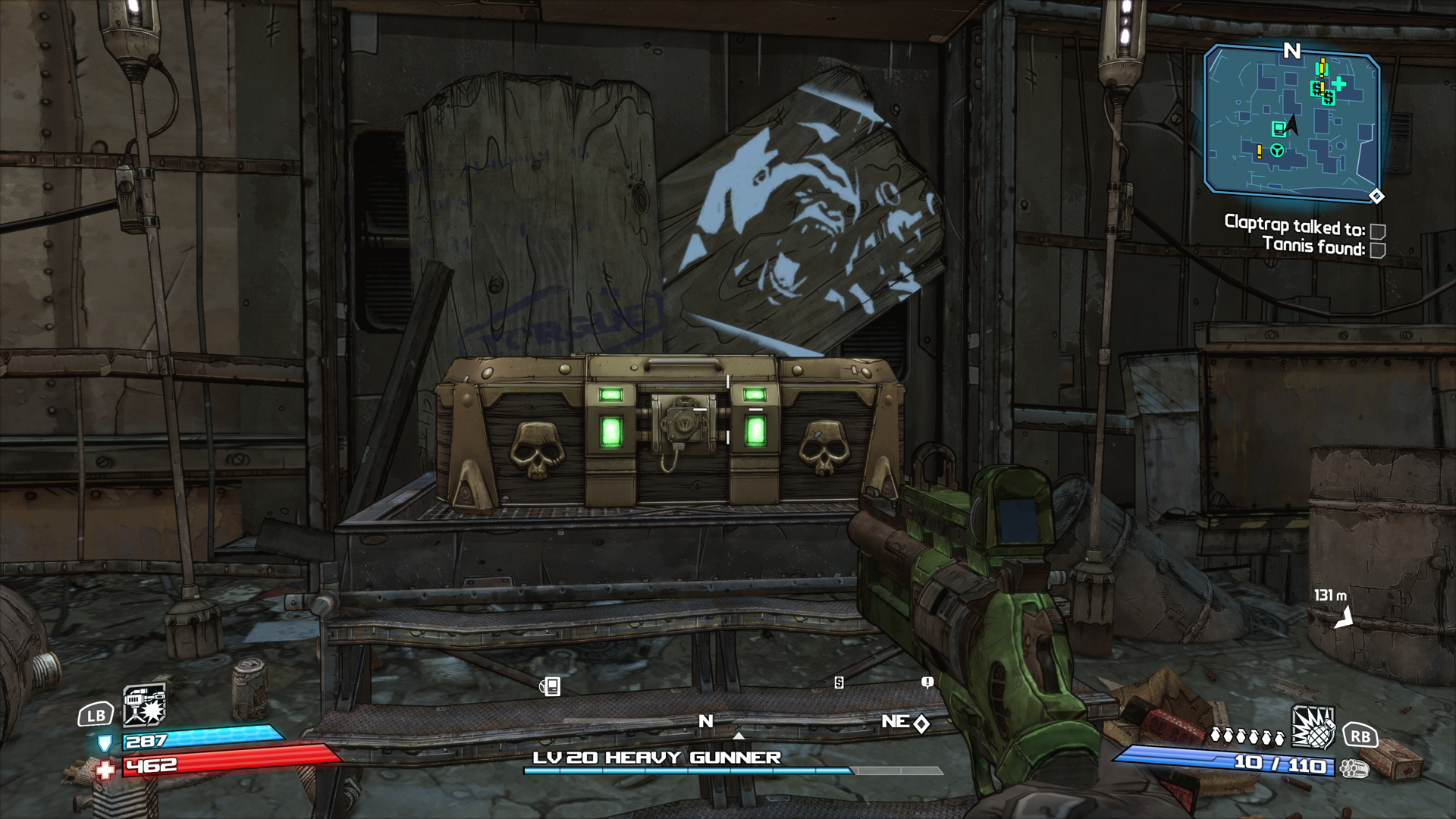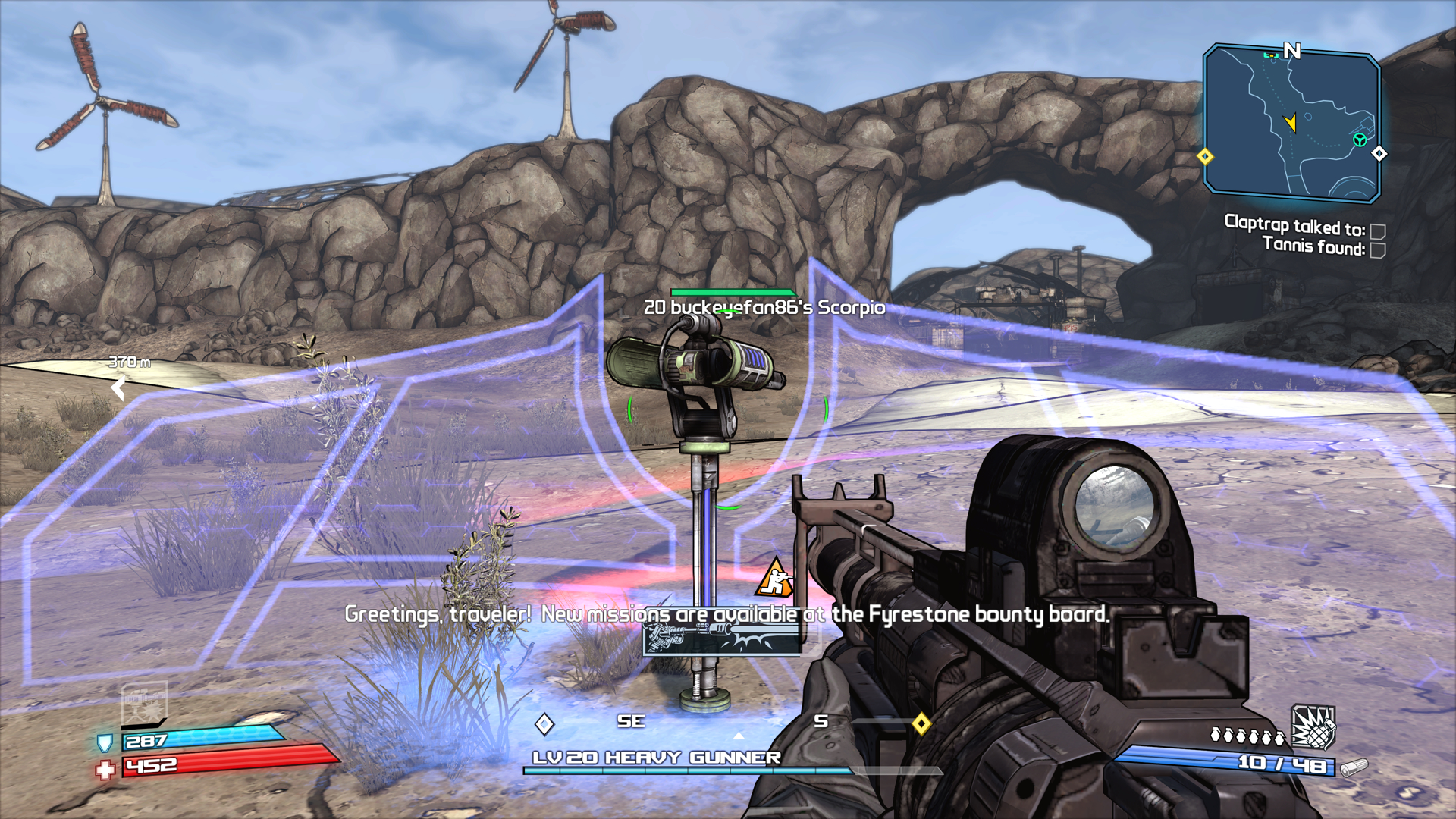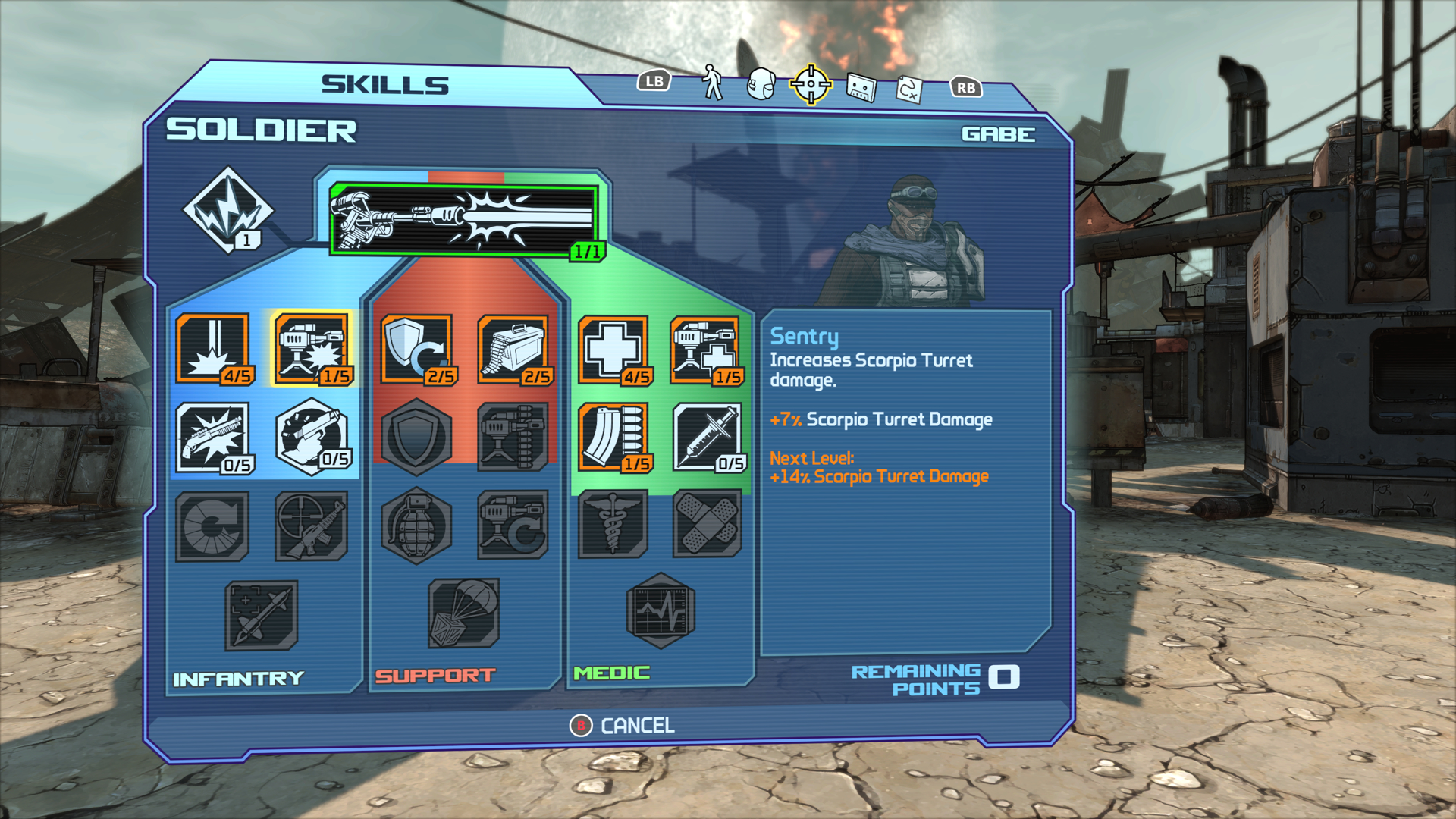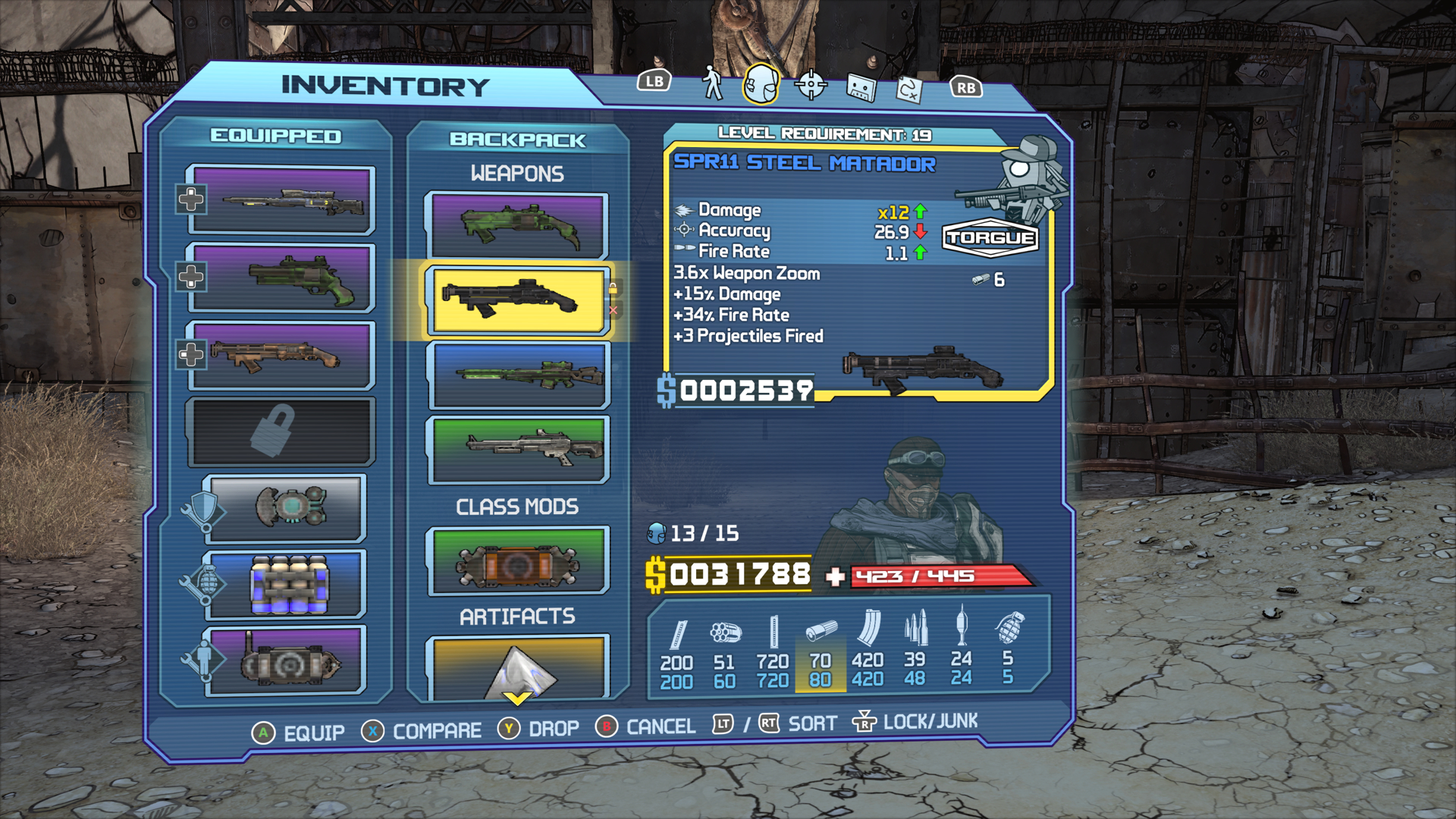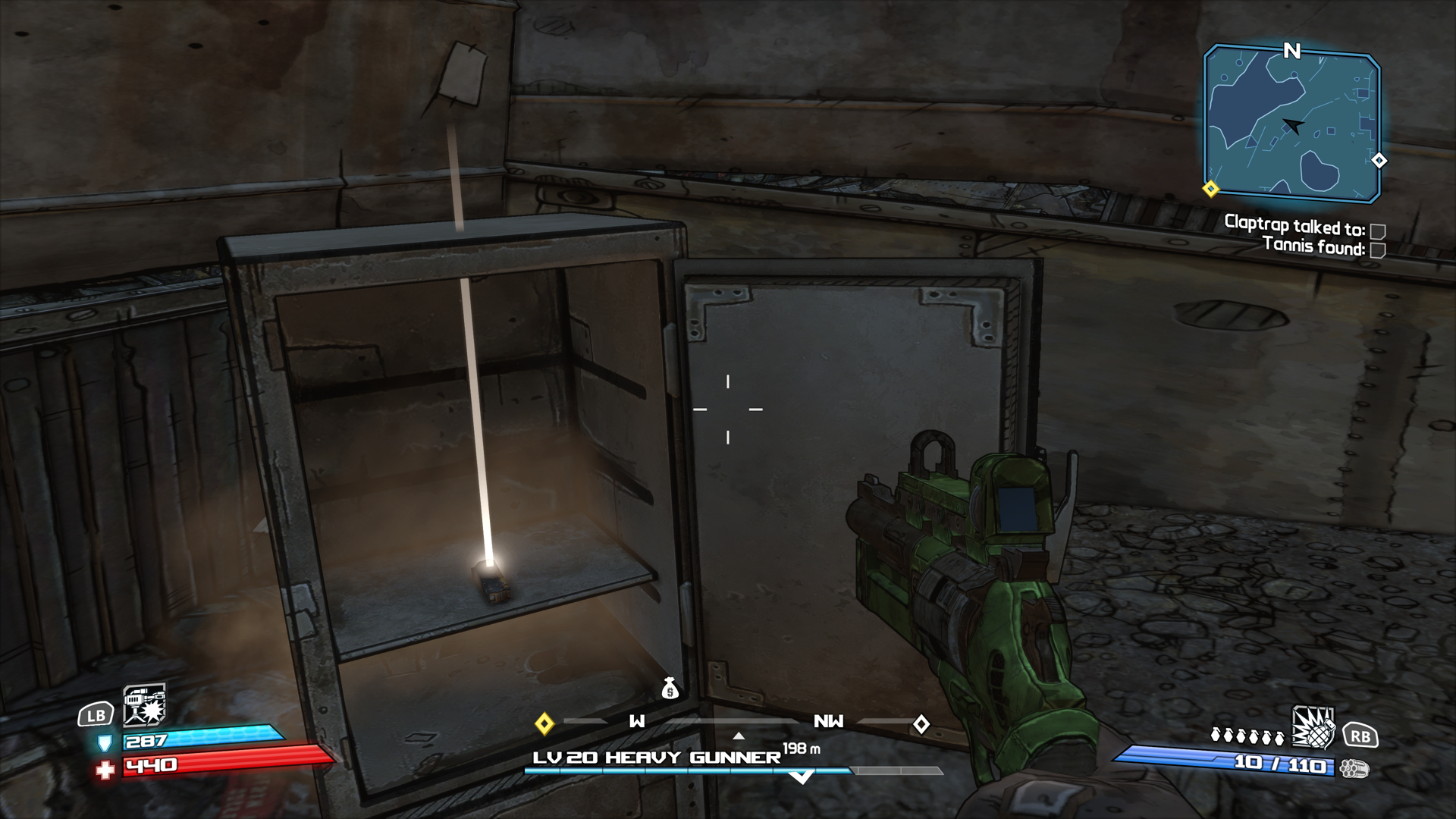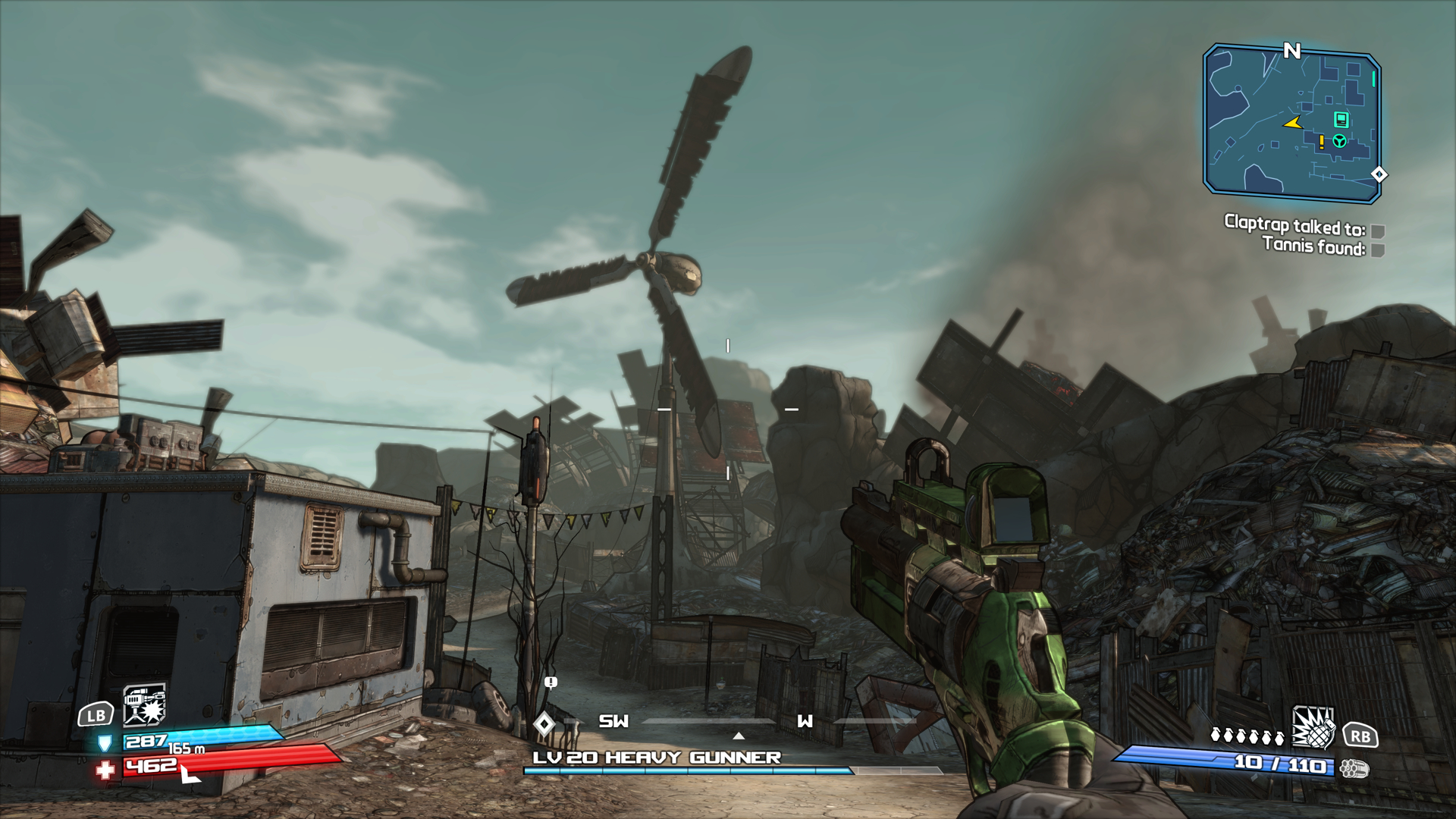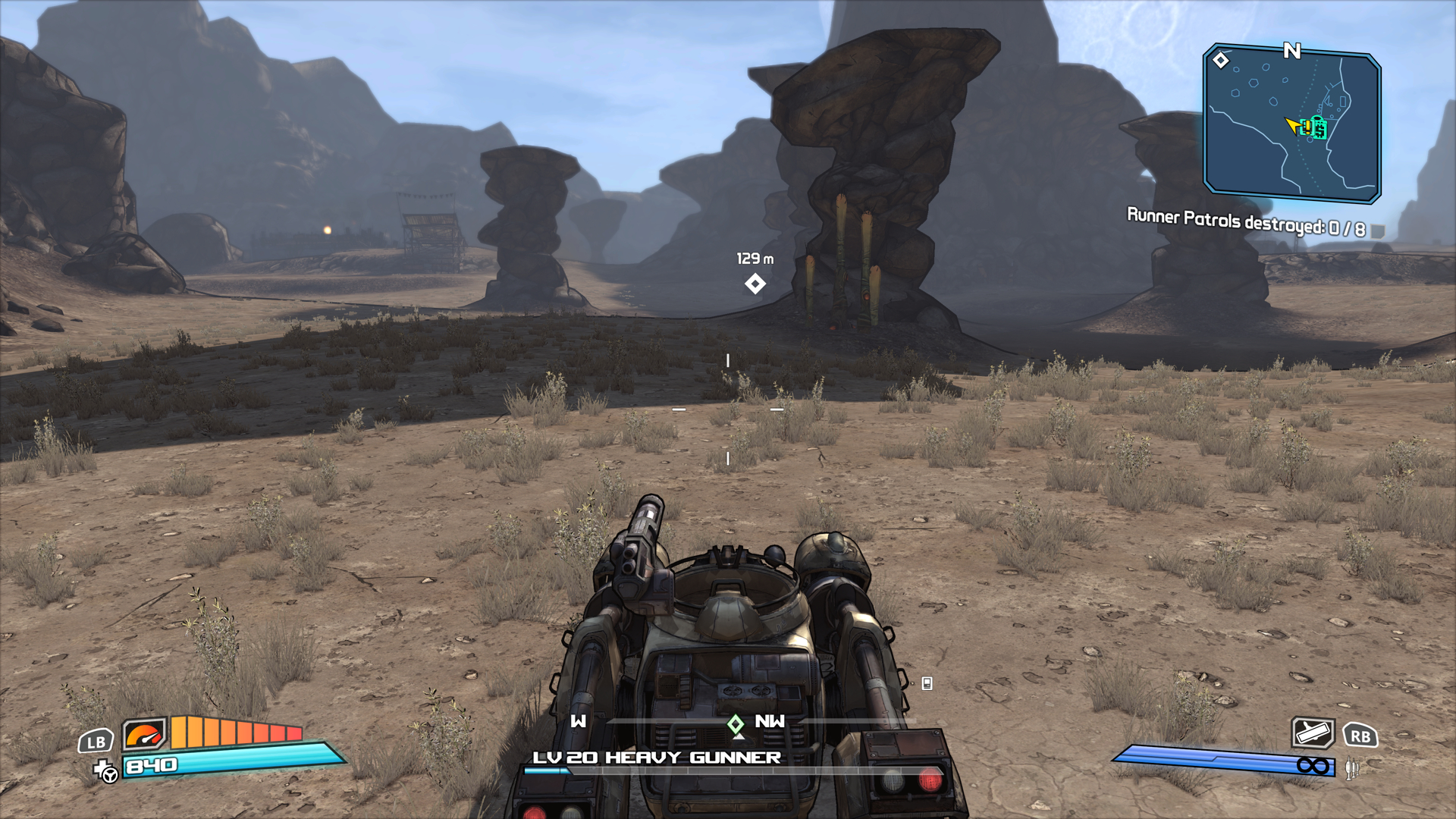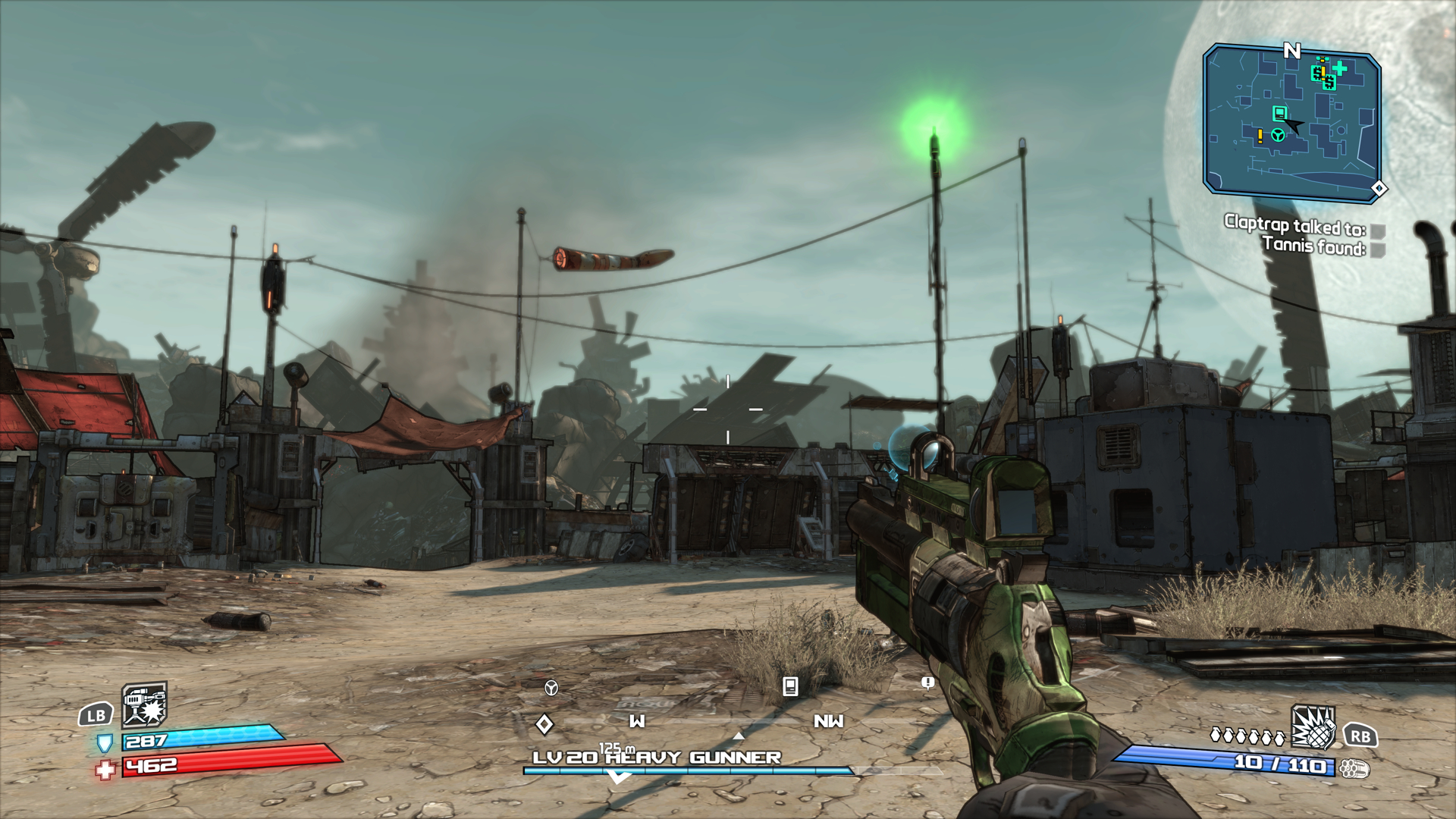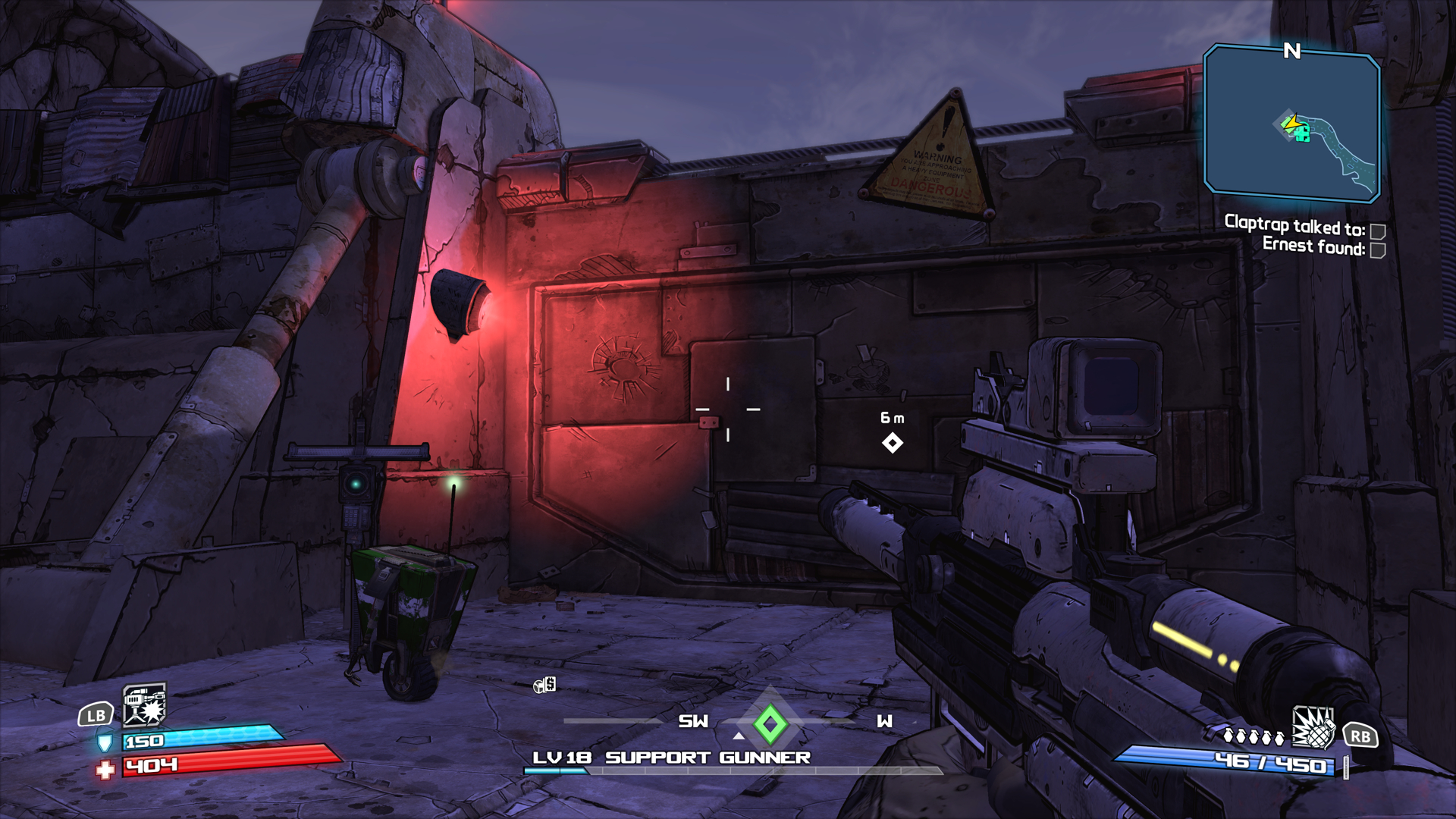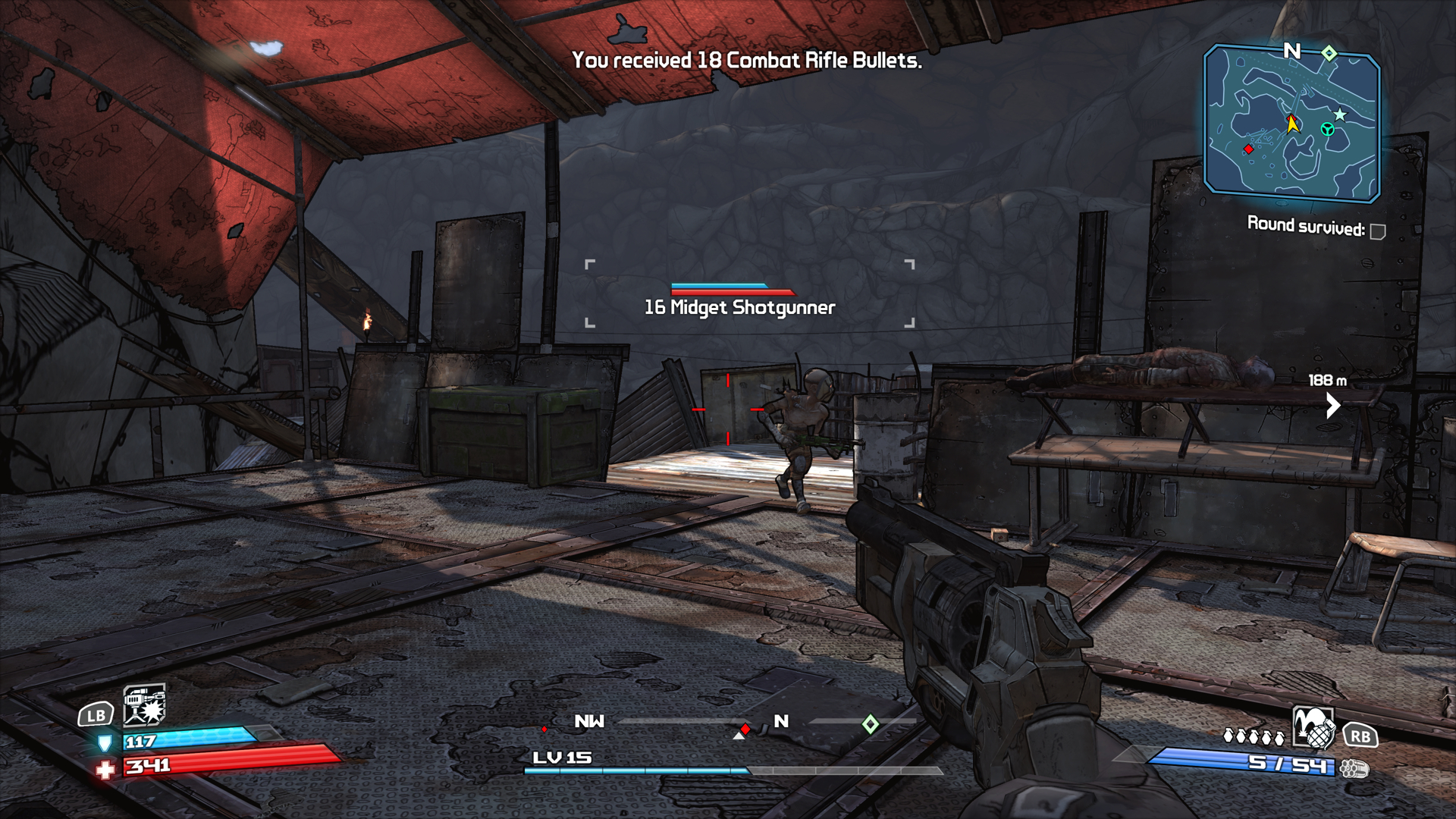This fall marks the 10 year anniversary of Gearbox Software’s Borderlands, a title that sparked the rise of the “loot shooter” genre. While not the first game to do it, Borderlands clearly inspired the spawn of titles like Destiny, Warframe, and The Division. With a pseudo-cel-shaded art style and ridiculous tone that contrasted heavily with the super-serious shooters at the time, Borderlands not only helped cement a burgeoning genre but moved us away from the drab and dire modern combat we had been fed for several years.
While the original Borderlands was the first taste of the loot shooter formula for many players, I was first introduced to the world of Pandora through Borderlands 2, and fell in love with the quirkiness and frenetic action the series was known for. With Borderlands 3 arriving in September, it seemed like the perfect time to revisit the dusty planet and finally see what the first game had to offer.
If you have played either of the game’s sequels, it’s apparent their DNA originated in the original Borderlands. Playing it in 2019, however, is only a reminder of how far game design has come since then. In Borderlands 2, the dastardly villain Handsome Jack is established fairly quickly. Borderlands lacks that same direction. You begin by choosing one of several Vault Hunters sent on a mission in Pandora to collect mysterious technology. The moment your boots touch the ground, you’re left to your own devices. There is no backup, and few friendly faces are willing to give you any sort of assistance – with the exception of a famous robot.

Welcome, traveler!
This robot, named Claptrap, offers a variety of missions on the local Bounty Board. Enemies fire shots at you in the distance while creatures snarl and leap up close. Loot – so much loot – can be found in every unlocked box, crate, and locker you come across, constantly offering a new way to engage enemies. If you’ve played the later Borderlands games or are gearing up for Borderlands 3, the picture it paints likely sounds familiar. The world is yours to explore as you see fit.
This level of non-direction might seem chaotic now, but I can see why this formula caught on with so many players in 2009. Story-focused shooters had largely taken the same path as Call of Duty, setting the action in closed environments with direct and mandatory goals. There was little room for deviation or self-expression. Setting your own pace and having the choice to complete objectives in your preferred order was a liberating feature at the time. Being able to customize your weapons and abilities, and experience the whole thing with your friends only helped to sweeten the deal.
Today, playing “at your own pace” in Borderlands feels like padding on a razor-thin plot. Even if you’re playing through a large chunk of the side missions offered during your adventure, you will eventually find that the next story mission is at least a level or two above the one you’re currently at. The solution to this is taking on a tedious quest that tasks you with collecting some arbitrary item, killing an enemy, or doing some combination of the two. Rarely do these quests feel fulfilling as they don’t enhance the main storyline or provide more context to the universe.
Conversations that move the story forward rarely last longer than a minute, and many of the events shown in cutscenes are even shorter than that. Much of the remaining storytelling is done through the descriptions of the quests, but with such poor story building and only the promise of more experience and loot baiting me forward, I found little motivation to continue playing.
Despite completing missions recommended for my level, and often killing enemies above my level, the rewards were just not worth the effort.
It’s a shame because many of the characters in Borderlands are charming, and I found myself thoroughly enjoying the goofy and cheery sense of humor found in several of the voice-acted moments. Most of these came from Claptrap with my favorite being an animation where the robot would begin dancing, proclaiming his boogying abilities to the world. It had no impact on my adventure, but it emphasized the silliness that is at the center of Gearbox’s work.
It was a welcomed change to the desolate and nigh-apocalyptic settings I’ve grown accustomed to seeing in so many other games. Metro Exodus, The Last of Us, and even Destiny offer harrowing storylines based on principals of survival and rebuilding society, but moments of levity help to make the tension more bearable.

The not-really-cel-shaded art style reinforces this. You can only take a fearsome enemy so seriously when they look like they came from a coloring book, and that’s a very good thing if you’re seconds away from blowing them to bits. While other shooters have lifted Borderlands’ mechanics in recent years, its art style remains largely unique.
Pandora’s loot box
Loot is an enticing reward. It’s the reason why people continue to play Diablo III, World of Warcraft, and many other MMOs years after finishing the main storyline. Unfortunately, it’s what makes the gameplay loop in Borderlands all the more frustrating. Despite completing missions recommended for my level, and often killing enemies above my level, the rewards were not worth the effort. Most of the time, the weapons I’d get would be less than useless in a firefight.
While its flat story and drab loot struggled to keep me fully invested, its charming cast of characters and vibrant art style shine, even today.
High-powered enemies that took multiple tries to kill would drop gear that wasn’t even worth selling. The weapon crates I found after mowing down waves of “Psychos” would only occasionally offer a worthwhile reward, and I’d sometimes be left without a weapon I genuinely enjoyed using for hours. I was often left wondering, “Why did I do that?” after completing another fruitless encounter.
Loot and storytelling would be less of an issue in Borderlands if the combat was varied enough to keep things fresh. The most frequent fights involve walking into a seemingly-empty area before a swarm of enemies emerge from nearby caves and buildings. I would take cover, pick off the most dangerous targets from afar, and then clean up the stragglers with a shotgun or machine gun. When facing powerful enemies or bosses, the strategy switched to running away and occasionally turning around to fire at weak points until they got close enough to attack. Sometimes grenades would play a role or environmental hazards like exploding barrels.
It lacks the variety I’ve come to expect from open-world games with extensive skill trees. Enemy tactics are similar enough that I could get away with repeatedly shooting at them until they were all dead. Extra abilities, like turrets or environmental damage, only play a minor role in any encounter.
There is one mechanic that stands out in Borderlands and it’s called “Second Wind.” This brings you back into the fight if you can kill an enemy before a timer runs out. Despite how simple it sounds, it never loses its appeal, and even makes it into the sequel.
Borderlands deserved the positive attention it received nearly 10 years ago. It helped shape the loot shooter genre and had more personality than most other AAA games on the market. While its flat story and drab loot struggled to keep me fully invested, its charming cast of characters and vibrant art style shine, even today. Borderlands ‘ rough edges don’t hide the clear influence it had on Borderlands 2, which improved on its formula immensely, and if we’re lucky, Borderlands 3 will be able to do it again when it launches later this year.
Editors' Recommendations
- Gearbox Studios on using performance capture in New Tales from the Borderlands
- Gearbox employees reportedly denied promised Borderlands 3 royalty bonuses
